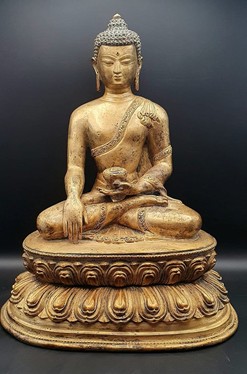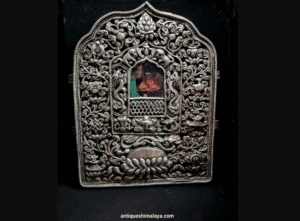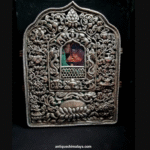The Himalayan region, often regarded as the roof of the world, has long been a spiritual sanctuary where culture and faith intersect through sacred art. Among its most revered treasures are Himalayan Buddhist artefacts, which offer a fascinating lens into the spiritual and cultural life of the region. These artefacts do more than adorn monasteries or homes—they tell stories of devotion, philosophical depth, and historical transformation.
The Sacred Origins
Himalayan Buddhist artefacts trace their roots back to ancient Tibetan and Nepalese traditions that evolved around Vajrayana Buddhism. These pieces—ranging from intricately carved statues to ritual objects like vajras and mandalas—hold significant spiritual purpose. They are not merely decorative but are considered powerful tools in meditative practice, symbolizing enlightened states of mind and the journey to spiritual awakening.
Cultural and Religious Symbolism
Each item carries layers of symbolism. For instance, statues of the Buddha often display specific hand gestures, or mudras, which represent different teachings or qualities such as fearlessness, compassion, or wisdom. Similarly, ritual objects like prayer wheels and thangka paintings are embedded with sacred scripts and motifs, serving both as devotional instruments and as visual teachings for practitioners. These artefacts are deeply integrated into the fabric of Himalayan monastic life, helping to preserve oral and visual traditions across generations.
Artistry and Craftsmanship
The creation of these artefacts is an art form guided by strict spiritual principles. Artisans, often trained from a young age, adhere to iconographic guidelines passed down through lineages. Metals like bronze and copper are carefully molded and often adorned with semi-precious stones. Thangka painters use natural pigments and work with meticulous detail to depict scenes from Buddhist scriptures and mythology. The resulting artefacts reflect both high artistic value and spiritual reverence.
Historical Influence and Global Appeal
Beyond the monasteries and temples, these artefacts have found a global audience intrigued by their historical and aesthetic significance. Scholars and collectors alike are drawn to their timeless beauty and the stories they encapsulate. As global interest in mindfulness and Eastern spirituality grows, Himalayan Buddhist artefacts continue to inspire both spiritual seekers and cultural historians.
In conclusion, for those interested in exploring the rich spiritual and artistic heritage of the Himalayas, a wide range of authentic and meaningful artefacts can be found at Antiques Himalaya, a trusted name dedicated to preserving and sharing the sacred traditions of this mystical region.








Most of whatever you claim is supprisingly appropriate and it makes me wonder the reason why I had not looked at this in this light before. Your article really did switch the light on for me as far as this specific topic goes. Nevertheless at this time there is just one issue I am not necessarily too cozy with so while I try to reconcile that with the core theme of the issue, allow me see just what all the rest of your readers have to point out.Nicely done.